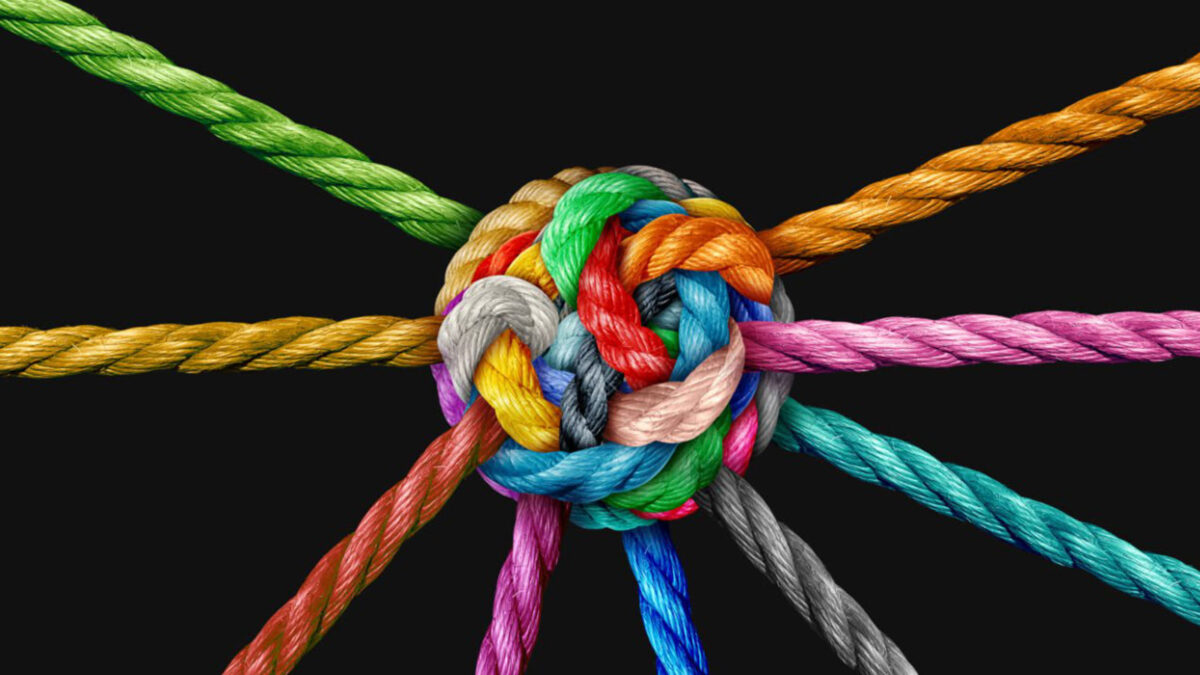
Modeling the Art of Conflict Management
May 2024
Download This Article (.pdf)
When I was applying to law school, I made the acquaintance of an attorney. In the conversation, I mentioned a conflict that I’d had with a stranger. I told him, “I showed her. I’m going to be a lawyer!” And I proceeded to recount how I had emotionally abused her. He gently showed his disapproval.
I left the interaction confused—wasn’t the point of being a lawyer beating up the other person and showing who’s on top? “Cross me—you’ll have hell to pay!” had been my uninformed interpretation of the profession.
I’ve since come to view the profession differently. I now understand that the best lawyers strive to minimize conflict and that conflict management is an artform requiring practice, creativity, and dedication to the craft. Moreover, I believe that we have a professional duty to model civility as we hone our conflict management skills. This article discusses how we can be role models for colleagues, clients, and the public as we navigate conflict in our work.
Productive Conflict and the Adversarial System
How do we manage conflict? As attorneys, we deal with conflict constantly and are players in an adversarial system. This system has been developed over centuries and acknowledges that conflict occurs within a society and that Western culture has created a way to manage these conflicts.1 Contrary to public perception, a large part of what we do is deescalate conflict. As we mentor new attorneys, we demonstrate competency in the skills of being an attorney, but we also show the art of managing and directing conflict.
We’re taught in law school to see both sides of an issue. We do this to find the strengths and weaknesses in our position and assess the same in the opposing side. In analysis and negotiation, we review in what areas compromise can occur. Our judicial system exercises and displays built-in guardrails to acknowledge conflict and prevent escalation. In his article “Our Constitutionalized Adversary System,” Freedman states,
People who have grievances against one another come to lawyers as an alternative to fighting it out physically. “We” don’t set the parties fighting. Rather, society, through the legal system, channels people’s grievances into socially controlled, nonviolent means of dispute resolution. We—the lawyers—play an indispensable part in that constructive societal process.2
How do we translate this essential need to new attorneys? How do we model this? New attorneys learn by doing, but a clear articulation of the method by a mentor with examples can prevent or at least help new attorneys navigate potential problems manifesting as insecurity, inefficiency, and unnecessary and unhelpful conflict with opposing counsel, the bench, and our clients.
In the practice of law, we throw all the opinions on the table and try to sort out the truth. One circumstance where we exercise this skill is when conducting an intake with a client. The client gives us their perspective. For their benefit, we sort through the story, finding the misperceptions, biases, and issues that are essential to the case that the client may initially skip over. What serves our clients best is an unfiltered view of the circumstances. In that objectivity, an attorney can analyze a case and anticipate the other side’s strategy. Importantly, we set realistic expectations for our clients, while their desire is a mixture of legal and personal agendas. If we solely fight without acknowledging and understanding the leverage the opposing side may maintain, we are blindsided and fail to effectively advocate for our client.
It’s apparent that in any negotiation, neither side is going to get entirely what they want; both sides leave something on the table. With a goal of resolution, we drill down to the essential issues for the client and explain how these can be attained through the law. We also assess the points a client will not budge on—that is, the client’s hierarchy of priorities. When communicating with the opposing party, we may concede the more flexible aspects of the case to keep negotiations moving. If both sides are inflexible, it is guaranteed that neither will receive their optimal result. This leaves it to the judge to ultimately decide the outcome with the risk that our client’s result is worse than if they had compromised in the first place.
Within this adversarial system, our ultimate goal is to bring some resolution to our clients, oftentimes after a painful and contentious experience, so that they can have some closure and move on to the next chapter of their lives—win or lose.
Modeling Professionalism
But how do we handle ourselves in the courtroom? Do we treat the staff, opposing counsel, and the bench with respect and professionalism? As lawyers, we have the training, the experience, and the duty to impress these qualities onto attorneys entering the field, and to model this skill to the public.
When first starting out as an attorney, I was negotiating a contract dispute. It resolved favorably. A few months later, I received a call from a potential client who had been referred to me by opposing counsel. I asked the attorney why he had referred the client, and he simply replied, “You did good work.” I proceeded to do contract work for him as he mentored me in his practice area, and needless to say, in his professionalism.
One of the best pieces of advice I received from a mentor was, “Make friends with opposing counsel—you never know when you might need a favor from them.” He recommended this as a longtime criminal defense attorney. He gave the example that if he needed a prosecutor to exercise discretion, he had built the credibility necessary with the prosecutor when the client and case warranted it.
From another point of view, a dear friend of mine has been in law enforcement for over 25 years. Embarrassingly, in my ignorance, I hadn’t realized my underlying stereotypes and had assumed that as a cop, he would be aggressive, intractable, and unable to compromise. Grateful for his patience and grace, I came to discover that he was one of the most skilled people I have ever seen manage conflict. I believe his excellence is due to the fact that he deals with exceedingly high-conflict situations, those that could cost his or another’s life.
As attorneys, we experience higher levels of stress than many other professionals.3 The consequences in our work are serious without a doubt, but with this is a gift—we have a high capacity for conflict. Further, despite the seriousness of our work, we maintain a civility and even collegiality within the profession. We can argue in a contentious proceeding and have lunch with opposing counsel afterward.
Image and “Rambo Lawyering”
Some clients expect their attorneys to exhibit unprofessional behavior—they think attorneys are paid to be arrogant and aggressive. But the duty of competent and professional representation is determined by the Rules of Professional Conduct, not by the client’s perception. Ultimately, the client is in charge of their case, and if their expectations are unfulfilled, they may look elsewhere to find an attorney who matches this image. Or if the client stays but insists upon an unfettered or unprofessional attack against the other side, these expectations may indicate future problems in representation. In the meantime, their dissatisfaction persists, and billing could potentially become a problem.
Along with this issue, an attorney may be confronted by unprofessional opposing counsel who uses “Rambo lawyering.” As with the troublesome client, attorneys cannot allow another’s tactics to sway their method of lawyering. Stay with the issues, maintain professionalism, and do not allow contempt to enter into representation. We are called to a high standard of professionalism and ethics. Staying true to one’s values will prevent attrition and burnout.
Different Perspectives and Strategies for Conflict
Another consideration is how conflict is perceived and managed by other populations, such as lawyers who are underrepresented in the profession. I am a petite Filipina with a quiet voice. As I am not a six-foot man with a booming voice, I developed a litigation style that expressed my strengths and what I value. My strategy when I enter the courtroom, in the best service to my client and with respect to the judicial system, is to present the most professional and even kind manner that demonstrates respect for everyone in the courtroom, particularly opposing counsel.
Partly, this was initially developed in my experience as a woman of color. I had been conditioned to think that if too aggressive, I would be labeled as belligerent or seen as having a “chip on my shoulder.” To be sure, there are women of color who demonstrate a big presence and a commanding style, as well as six-foot men who are reserved and compromising like the sheriff mentioned earlier. But for me, as I developed as an attorney and grew as a person, I discovered that this approach is consistent with my beliefs, personality, strengths, and perspective on why I practice law. We all find what works best for us, and there are innumerable creative ways to manage conflict.
Duty to the Public and to the Profession
In this time of incivility, there seems to be an irrational approach to conflict in the legal and public spheres. Mindful practice of law and professional responsibility can and should counteract this. We maintain the guardrails in our adversarial system. In our practice, we demonstrate that analysis and conflict lead to a deeper understanding of the issues. We have the long-standing tradition of a legal system that recognizes conflict will occur and provides a means to manage it before it escalates. Our justice system is an adversarial system where conflict is exercised to produce the most equitable result.
We do not practice in a vacuum. The practice of law is beyond what we do; it is what we represent. We are heralds of a legal system that has been developed over centuries. In our professional identity, we serve the public with our skills, but we project something more. We show how a fundamental institution of our country works. It is a privilege to be an attorney, and with any privilege comes responsibility. It is our duty to model how to manage and direct conflict in a healthy way and pass this responsibility to new lawyers.
When discussing this problem with colleagues, some senior attorneys will lament that these rules of civility are from times past. But in our Oath of Admission, we swear:
I will maintain the respect due to courts and judicial officers; I will employ such means as are consistent with truth and honor; I will treat all persons whom I encounter through my practice of law with fairness, courtesy, respect and honesty; I will use my knowledge of the law for the betterment of society and the improvement of the legal system . . . .4
This is the oath we take and the legacy that we pass on to new attorneys. This is what needs to be seen by the public about the work we do. We lead by example, to be sure, but to specifically articulate this duty to new attorneys will communicate the principles of the profession, and why our legal system allows us to direct and manage conflict productively. This is our calling and the art of being an attorney.
Related Topics
Notes
1. Freedman, “Our Constitutionalized Adversary System,” 1 Chapman L. Rev. 57 (1998), https://www.chapman.edu/law/_files/publications/CLR-1-monroe-freedman.pdf.
2. Id. at 68.
3. Johnson, “‘Most Stressful Occupation in America’: Lawyers,” National Jurist (Feb. 6, 2023), https://nationaljurist.com/national-jurist/news/most-stressful-occupation-in-america-lawyers/#:~:text=Lawyers%20are%20among%20some%20of,stress%20than%20a%20blue%20one.%E2%80%9D.
4. Oath of Admission, https://coloradosupremecourt.com/Current%20Lawyers/Oath.asp.


